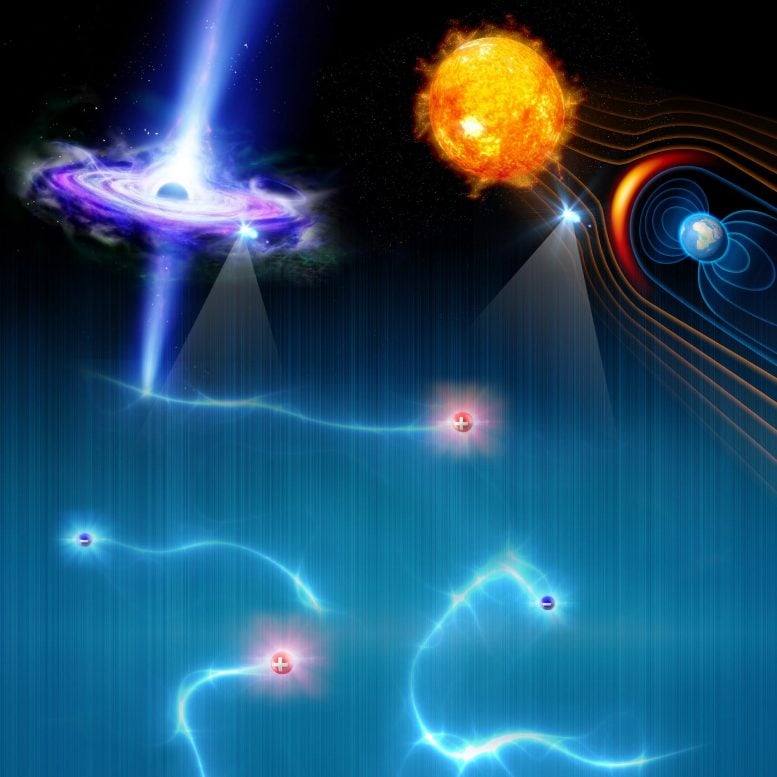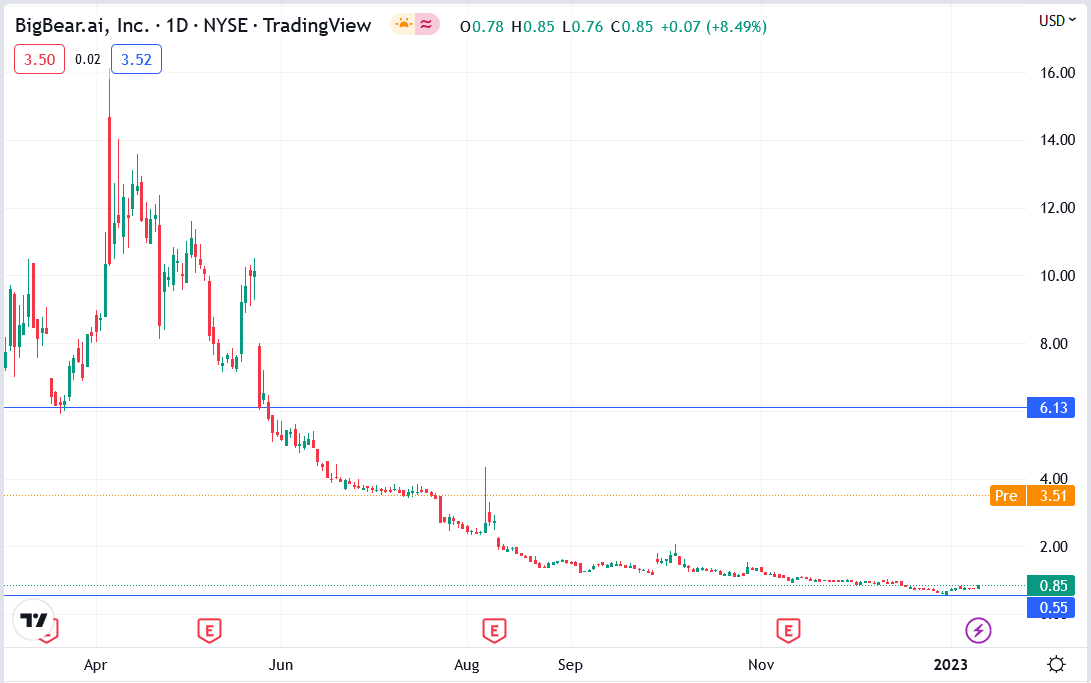China's Space Supercomputer: Engineering And Deployment

Table of Contents
The Engineering Challenges of Building a Space Supercomputer
Constructing a supercomputer for space applications presents unique and formidable engineering challenges. The extreme environment of space demands robust systems capable of withstanding harsh conditions while maintaining peak performance.
Architectural Design and Processing Power
The China's space supercomputer requires unprecedented processing speeds and capabilities. Massive parallel processing is essential for handling the enormous datasets generated during space missions. Fault tolerance is paramount, ensuring the system's continued operation even in the event of component failure. This necessitates specific architectural choices:
- Custom chip designs: China likely utilizes custom-designed chips optimized for power efficiency and radiation hardness, maximizing performance within the constraints of space-based systems. These chips likely incorporate advanced error correction codes and redundant circuits.
- Specific interconnect technologies: High-speed, low-latency interconnects are crucial for efficient communication between the numerous processing units within the supercomputer. This might involve proprietary technologies optimized for the space environment.
The following features are critical for the supercomputer's success:
- Extreme radiation hardening techniques: Space exposes electronics to high levels of radiation, requiring specialized hardening techniques to prevent damage and data corruption.
- Minimizing power consumption for sustained operation: Power is a precious resource in space; minimizing the supercomputer's power consumption is vital for extended mission durations.
- Robust cooling systems for space applications: Effective heat dissipation is crucial to prevent overheating and maintain operational stability in the vacuum of space. This often requires innovative and efficient cooling solutions.
- Modular design for easier maintenance and upgrades: A modular design allows for easier replacement or upgrading of individual components, minimizing downtime and extending the system's lifespan.
Software and Algorithms
The hardware's capabilities are complemented by sophisticated software and algorithms tailored to the supercomputer's unique architecture.
- Specialized software for simulations, data analysis, and mission control: This includes software for complex simulations of orbital mechanics, spacecraft design, and mission trajectories. Data analysis tools are needed to process the vast amounts of data collected during space missions. Real-time mission control software manages various spacecraft operations.
- Algorithms optimized for the supercomputer's architecture: Specialized algorithms are developed to fully utilize the supercomputer's parallel processing capabilities, enhancing efficiency and speed. This might include advanced parallel computing techniques and distributed algorithms.
Key software features include:
- Real-time data processing capabilities: The supercomputer must process data in real-time to enable rapid responses during critical mission phases.
- Advanced simulation software for orbital mechanics and spacecraft design: Accurate simulations are crucial for mission planning and spacecraft design optimization.
- AI and machine learning integration for autonomous operations: Artificial intelligence and machine learning algorithms are increasingly incorporated for autonomous navigation, decision-making, and anomaly detection.
- Cybersecurity measures to protect sensitive data: Robust cybersecurity protocols are essential to protect sensitive mission data and prevent unauthorized access.
Deployment and Integration into the Chinese Space Program
The China's space supercomputer is strategically deployed and integrated into the Chinese space program at multiple levels.
Ground-Based Operations and Mission Control
The supercomputer plays a vital role in ground-based operations, significantly enhancing mission planning and control capabilities.
- Mission planning, trajectory calculations, and real-time monitoring of spacecraft: The supercomputer enables precise trajectory calculations, optimizing mission parameters for fuel efficiency and accuracy. Real-time monitoring allows for immediate responses to unforeseen events.
- Integration with ground-based communication networks and satellite tracking systems: The supercomputer seamlessly integrates with existing ground infrastructure, providing a central hub for data processing and mission control.
Specific applications include:
- Satellite constellation management: Efficient management of large satellite constellations requires the processing power of a supercomputer.
- Deep space exploration mission support: The supercomputer is essential for planning and executing complex deep space missions.
- Manned spaceflight mission control: The supercomputer provides critical support for manned space missions, ensuring the safety and well-being of astronauts.
- Data analysis and scientific research: The supercomputer facilitates the analysis of vast datasets from space missions, leading to significant scientific discoveries.
Onboard Spacecraft Applications
While less likely to be a full-fledged supercomputer, smaller, specialized high-performance computing components may be deployed directly on spacecraft for certain applications. This presents significant challenges in miniaturization and power consumption.
- Autonomous navigation and control: Onboard computing allows for autonomous navigation and control, reducing reliance on ground-based systems.
- Data processing and onboard scientific analysis: Preliminary data processing onboard reduces the amount of data that needs to be transmitted back to Earth, conserving bandwidth.
- Real-time hazard detection and avoidance: Onboard systems can detect and respond to potential hazards in real-time, enhancing spacecraft safety.
Conclusion
China's investment in developing and deploying a dedicated space supercomputer represents a monumental achievement in its space program. The engineering challenges overcome and the sophisticated integration of this technology showcase China's burgeoning technological prowess. The supercomputer's capabilities are instrumental in managing intricate missions, facilitating advanced scientific research, and enabling the pursuit of ambitious goals in space exploration. This advanced computing power is a key enabler for China's continued leadership in the global space race.
Call to Action: Learn more about the remarkable advancements in China's space program and the capabilities of China's space supercomputer by exploring related resources and staying informed about future developments in high-performance computing for space applications. Understanding the role of this powerful technology is crucial for appreciating the ongoing evolution of space exploration.

Featured Posts
-
 Live Bundesliga Your Guide To Watching Every Match
May 20, 2025
Live Bundesliga Your Guide To Watching Every Match
May 20, 2025 -
 Zachary Cunhas New Role From Us Attorney To Private Practice
May 20, 2025
Zachary Cunhas New Role From Us Attorney To Private Practice
May 20, 2025 -
 Manchester Uniteds Pursuit Of Premier League Forward Newcastles Threat
May 20, 2025
Manchester Uniteds Pursuit Of Premier League Forward Newcastles Threat
May 20, 2025 -
 The Enduring Appeal Of Agatha Christies Poirot Mysteries
May 20, 2025
The Enduring Appeal Of Agatha Christies Poirot Mysteries
May 20, 2025 -
 Big Bear Ai Bbai 17 87 Drop Highlights Revenue Miss And Leadership Concerns
May 20, 2025
Big Bear Ai Bbai 17 87 Drop Highlights Revenue Miss And Leadership Concerns
May 20, 2025
